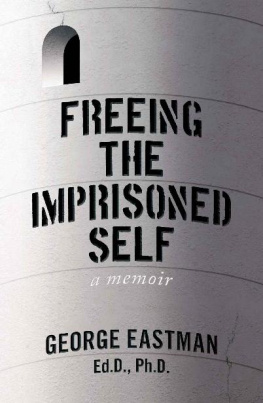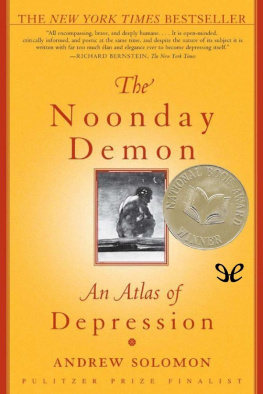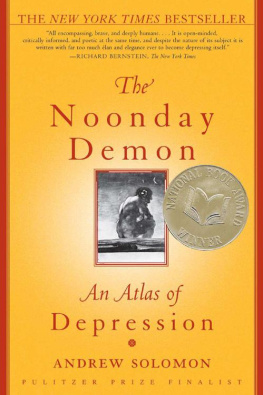
2014 George Eastman, Ed.D., Ph.D.
All Rights Reserved.
No part of this publication may be reproduced, stored in a retrieval system, or transmitted, in any form or by any means, electronic, mechanical, photocopying, recording, or otherwise, without the written permission of the author.
First published by Dog Ear Publishing
4010 W. 86th Street, Ste H
Indianapolis, IN 46268
www.dogearpublishing.net

ISBN: 978-1-4575-2624-4
This book is printed on acid-free paper.
Printed in the United States of America
Table of Contents
Preface
T hroughout the greater part of my eighty-two years of life, I have suffered from a schizoid personality disorder. In contrast to schizophrenia, in which the split is between the external real world and a distorted and often totally unreal inner world, the schizoid split is between an intensely private inner self that is experienced as rich and special, and a stilted outer self that is often mistaken by others to be detached, indifferent, superior, self-sufficient, and even hostile. A schizoid is also not to be confused with a psychopath, whose outer persona gives no indication of the possible delusions within; the psychopath is completely convincing as a mentally sound, related individual. Schizoids, on the other hand, may appear withdrawn, socially awkward, or tightly controlled; their unexpected or inappropriate behaviors tend to be seen by others as eccentricity or possibly signs of hidden genius. Unlike the psychopath, the schizoid is not interested in manipulating or exploiting others, is not driven to disregard others feelings without remorse or guilt. Rather, the schizoid focuses on a compelling inner life to the exclusion of social interaction. The schizoid will long for some safe and perfect form of human connection and make desperate attempts to achieve it only to withdraw from or sabotage the possibility, often in dramatic ways.
The schizoid does not consciously choose to live a double life, but simply knows no other way to be. For many decades, I was as oblivious to the schizoid sea in which I swam as a fish is unaware of the ocean it navigates. My story charts the dark, unfathomable schizoid world and illustrates the typically schizoid characteristics outlined below. These features do not by any means represent the full spectrum of the disorder. It must also be said that they are recognizable as common human traits on a broad continuum from normal to dysfunctional; many readers may identify.
- The schizoid person is highly introverted and prefers an elaborately constructed fantasy life to that of social interaction. The schizoid focuses obsessively on cultivating this private world that is experienced as rich, intense, and superior to actual human engagement. Contact with other people and any genuine intimacy threaten it. A perpetual outsider, the schizoid seeks safety and refuge in a self-made prison of both exalted and painfully lonely imaginings.
- Schizoids lives revolve around this hidden core, a haven where they spend most of their time engaged in fantasy. Interaction with the outer world only steals time from this inner experience filled with vibrant memories, imagined outcomes, powerful convictions, and beliefs. Untested in the real world, these fantasies build upon distorted and grandiose ideas of abilities, goals, and projects that will never be realized. Imagined relationships substitute for the real thing. This dynamic is self-reinforcing. It lures the schizoid deeper into delusion that does not satisfy and builds ever higher barriers to making contact with others.
- Such extreme introversion results in being seen by others as withdrawn from the world. Schizoids appear detached, uncaring, and emotionally uninvolved in what happens around them. They are often judged as cruel or insensitive because they cannot anticipate, neither can they see, feel, or acknowledge how their behavior affects others.
- Schizoids tend to be highly intellectual, and use supremely developed mental processes to avoid feeling. They become preoccupied with details or absorbed in abstract technical or philosophical issues. Ideas are more important to them than people. Guntrip quotes Descartes declaration, I think, therefore I am, as the perfect expression of a schizoid struggling to ensure that feelings do not overtake him.
- Introversion and withdrawal lead schizoids to become narcissistic. Focusing exclusively on their own needs and deeply personal experiences further desensitizes them to the feelings and needs of others.
- Schizoids appear self-sufficient and independent, yet they are intensely lonely. Within limitations, they often achieve unusual levels of apparent self-sufficiency. They are, however, dependent, often in a childlike way, and deny this with bravado: I need no one and wont put up with your boring presence. This pseudo-independence, often interpreted by others as superiority or aloofness, leads to further isolation and separation from the world of people. Guntrip has suggested a need for schizoids, lacking real and present nurturers, to parent themselves in secret.
- The schizoids retreat is a form of regression. Having failed, through the absence of maternal bonding, to establish a stable identity during infancy and childhood, the schizoid unconsciously fears any close relationship that threatens what little sense of self they have. For the schizoid, any real relationship would be tantamount to absolute infantile helplessness and dependence. Yet buried deep within lies an unquenchable thirst for connection.
- Schizoids tend to be ambivalent; they both desire and reject something at the same time. For example, they will long for closeness and connection while they fear and actively avoid genuine intimacy.
The above description acknowledges Ogden (1989), Guntrip (1969), and additional sources identified at the end of the Preface (see ). In the same manner, direction to supportive material drawn from the literature and listed in the References section will be provided throughout the forthcoming chapters.
This book is both a memoir and a case study an examination of my own long struggle to overcome schizoid patterning. It traces the roots of the disorder in early mother loss and a desolate home environment. It follows my ever inward-turning path, the cultivation of a highly independent secret life, and the discovery of safe haven in academia, a field that tends to attract schizoids, and even breeds them, according to some schools of thought. My choice of profession as a clinical psychologist at first seemed to offer an intellectual solution to my schizoid dilemma, perhaps a distraction from it. Eventually, however, it challenged me to progress toward healing and has supported my courage and determination to see it through.
There was no quick fix. The gradual, arduous shift away from a schizoid state envisioned as a tall, black cylinder in which I sit alone and isolated at the bottom is at times painful and difficult to relate. I have tried to disclose personal material that would customarily be shared in the sanctum of the consulting room frankly, without judgment or embellishment. I have tried to turn a newly compassionate but always objective eye on the clinical implications of my story. This exercise has challenged me and also rewarded me with joy and an exuberant sense of release.
Mine is a story of hope and of personal victory. By pairing it with a narrative of clinical interpretation, I hope to provide a blueprint of the disorder, both an interior and an exterior view. I also wish to encourage others who suffer from the painful and confounding limitations of schizoid personality disorders to overcome whatever barriers to their own freedom they may have inherited, acquired, or created.
Next page












